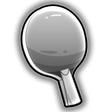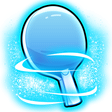Practicing forehand stroke at home with robot
Training
 Philip Samuel Asked 6 months ago
Philip Samuel Asked 6 months ago
Good morning, Alois and Jeff
As I have limited opportunities to practice with someone who can return the balls as consistently or feed multi ball like you, I rely on my robot.
Please let me know the type of ball you are sending to Jeff for the following:
FH Counter hit: looks to me like a moderate topspin
FH topspin against block: does the block have just a bit of topspin?
I should be able to work out the frequency from your videos. I can also vary the placement/flight by using the scatter function. I may also program 3-4 balls in the fh court and set at random.
I'll start at 40 bpm, and then gradually to 60 bpm. I find that if the frequency setting is too high the stroke shortens too much.
Thanking you for your assistance, as always.
 Alois Rosario Answered 6 months ago
Alois Rosario Answered 6 months ago
Hi Philip,
Great to hear that you're making good use of your table tennis robot to improve your skills. Let's break down the types of balls you should be setting up your robot to deliver for effective practice.
1. FH Counter Hit: For the forehand counter hit, you're right in observing that this typically involves a moderate amount of topspin. When setting up your robot, aim for a setting that generates a consistent, medium-paced topspin ball. This will best simulate the type of return you'd expect from a good counter hit during a rally. The idea here is to focus on maintaining a stable stroke and improving your timing and accuracy.
2. FH Topspin against Block: When practicing your forehand topspin against a block, the block itself should ideally have just a bit of topspin or be relatively flat. This simulates the typical scenario in a game where your topspin stroke is countered by a block from your opponent. The slight topspin on the block will help you prepare for more realistic game situations, where blocks can vary but often carry a bit of spin due to the incoming topspin.
Regarding the frequency and placement settings: - Starting at 40 balls per minute (bpm) is a wise choice, as it allows you to focus on the quality of your strokes without feeling rushed. As you get comfortable, increasing to 60 bpm or more can be beneficial for enhancing your speed and reflexes, but you're correct in noting that too high a frequency can shorten your stroke. It’s important to find a balance that challenges you without compromising the technique. - Using the scatter function to vary the placement is an excellent strategy to prepare for real-game situations where ball placement is unpredictable. Programming 3-4 balls in the forehand court and setting it to random will further enhance your agility and adaptability. Remember, the key to effective practice with a robot is to gradually increase the complexity and speed as you become more comfortable with simpler, slower settings. Always focus on maintaining good form and technique above all else.
Recommended Video
The Importance of the Backhand
Due to the speed at which the modern game of Table Tennis is played, the backhand has become a stroke which can separate the medium level players from the elite players. Make sure you pay attention to your backhand and develop it so that you opponent cannot get a soft ball by simply playing to your backhand.
Watch NowThoughts on this question
Become a free member to post a comment about this question.
Great advice as always, thank you. BTW Tom Lodziak is featuring your latest Podcast on his Academy!